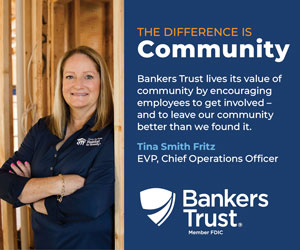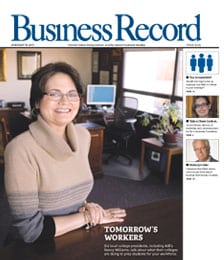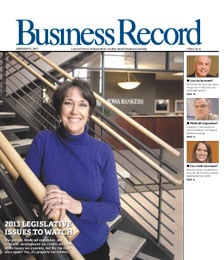A new image for checks

It’s a safe bet that unless you’re a banker, the last thing on your mind when you pull up to your bank’s drive-up window to deposit or cash a check is how that check is going to be processed.
However, a federal law that takes effect this fall will probably mean you won’t have to make it to the window before 2:30 p.m for that check to be credited to your account the same day. Besides reducing the “float” time on checks, the new law is expected to save financial institutions billions of dollars in processing costs, which could translate into lower fees for customers.
Under the Check Clearing for the 21st Century Act, effective Oct. 28, banks and credit unions will no longer have to ship paper checks across the street or across the country to the institutions they were drawn on to process them. Instead, they will have the option of generating a new type of negotiable instrument — “substitute checks” — in either electronic or paper form, that will have the same legal clout as the original.
“There’ll be a big savings in no longer having to fly those (paper checks) around,” said Paul Waltz, chief operating officer for Clive-based First American Bank.
NCR Corp. estimates the U.S. banking industry currently spends more than $70 billion a year to process checks.
Waltz figures his bank pays more than $100,000 a year to have checks flown from its branches in Sioux City and other cities in time to meet the processing cutoff. “Under the new system, we’ll be able to get those items out without having to have those flown in.”
First American invested in check-imaging technology in late 1999 to speed up its internal handling of checks; the Check 21 law will allow the bank to more fully take advantage of that technology, Waltz said.
Under Check 21, banks should be able to process checks up until closing time, rather than having to impose a cutoff in the afternoon to allow time to physically move the checks through the system, Waltz said.
Besides speeding up what’s typically a two-day process for clearing checks to an average of one day, Check 21 will also reduce the potential for processing errors, said Fred Herr, a senior vice president with the Federal Reserve Bank of Atlanta’s retail product office. That’s because once a paper check is converted into an electronic data field, it doesn’t have to be machine-sorted and physically handled again, he said.
As part of the process, the original checks will be shredded after being scanned and customers that had received their canceled checks with their statements will instead receive substitute checks that bear the images of the originals.
“It creates a lot more efficiency, and it speeds up the transportation time,” Herr said. “And speeding up the process speeds up the fraud identification process as well.”
Banks that don’t upgrade to imaging technology to take full advantage of Check 21 will be at a competitive disadvantage, said Keith Taylor, a senior vice president with NCR Corp.
“By deploying check truncation and imaging technology, banks will be able to offer expanded banking hours to both commercial and consumer customers, as well as next-day availability of deposited funds,” he said. Additionally, “customers can access check files 24/7 online.”
The act was prompted in part by the events of Sept. 11, 2001, and the realization that a system less dependent on physically moving checks was needed, said Michael Helak, president of U.S. Bank’s Des Moines region.
“Frankly, most people don’t understand most checks are physically moving between banks,” he said. Removing the legal hurdle to accepting electronic images “really is a watershed event that’s going to move the industry forward.”
U.S. Bank expects to complete an upgrade to its check scanner-readers by June to be ready for Check 21, he said.
Helak said that the cost savings the bank realizes will probably be passed on to customers.
“As competitive as our industry is, typically that keeps us honest, if you will, and I think we will pass those savings on,” he said. “And we expect fraud costs to go down, so that will put us in a better position to have lower costs and pass those through.”
How quickly will banks embrace the option of generating substitute checks?
“We’re trying to figure that out right now,” Herr said.
“It’s fairly complicated because it’s going to end up being a business-case driver,” he said. “Until enough institutions on the receiving side re-engineer their operations, the business case is going to be extremely challenging to justify (the additional cost). We don’t see this as a one-year timeline.” It will take place over multiple years.”
CHECK WRITING ON THE DECLINE
According to the most current Federal Reserve study, nearly 43 billion checks, valued at $32 trillion, were processed in the United States in 2001. Those checks were used to pay for an estimated 18 percent of all consumer transactions at the point of sale, ranking them behind cash (33 percent), debit cards (26 percent) and credit cards (21 percent) as the preferred means of payment.
Bankers say the popularity of debit and credit cards has meant between 4 and 8 percent fewer checks are being processed each year. The Fed is currently conducting an updated study of consumers’ check-writing habits.







